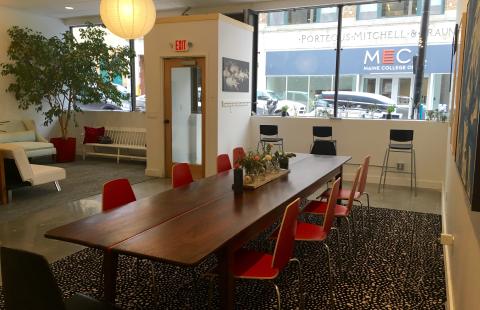What were the specific goals of this creative economy project? Describe the community development challenge or opportunity that your project was designed to address:
The goal of this space development project was to engage with the community, forge new relationships and create a beautiful welcome center and office environment on a shoestring budget.
If the goals change over time, please describe how:
The opportunities were presented as the process unfolded. Very early on, a community arts center became the new goal. Curating an art exhibit and soliciting established and emerging artists became a passionate objective as I immersed myself in the community, bounced arounds some ideas and upped my networking efforts.
As the space began to take shape, other nonprofit organizations and fledging community groups walked by and asked about using our space for their own community meetings. Yes, yes , yes! Our new goal changed to become more about welcoming the arts community than curating an office space for our own small staff. "Yes, let's try that" or "Yes, we can think about helping you with this."
Who was involved in this project and what did they do? (be sure to include the partners from outside of the creative sector and how local voices were included):
Reaching out to the board for support was the first "ask," followed by a "tell" to family members. With an architect on our board and skilled laborers, we launched our efforts with a permit issued for construction only two months before we opened our doors in a grand opening ribbon cutting ceremony with the mayor, city manager, congressional leaders, developers, artists, hotel owners, city council members, directors of arts and culture institutions, nonprofits, caterers, bakers, farmers, and shop owners.
Identifying enthusiastic, supportive partners and participants in the private sector made the biggest difference, from home goods stores to private business "angels" who helped steamroll the project to fruition.
How does this project relate to a larger community development strategy?
A community development strategy focuses on identifying the community need and then adapting priorities and initiatives to meet those goals while embracing the community's input, perspectives and resources.
What projects or places, if any, inspired your approach to this creative economy project?
Working on a live television show, "Saturday Night Live" trained me to collaborate, problem solve and work efficiently with the community to engage a diverse skill set to get the job done, quickly and efficiently.
